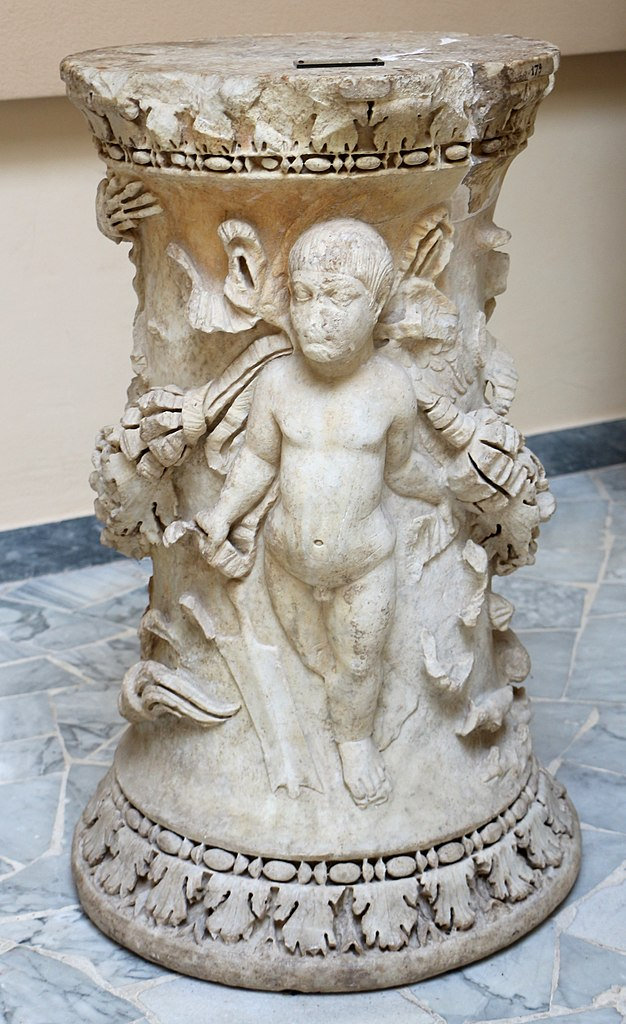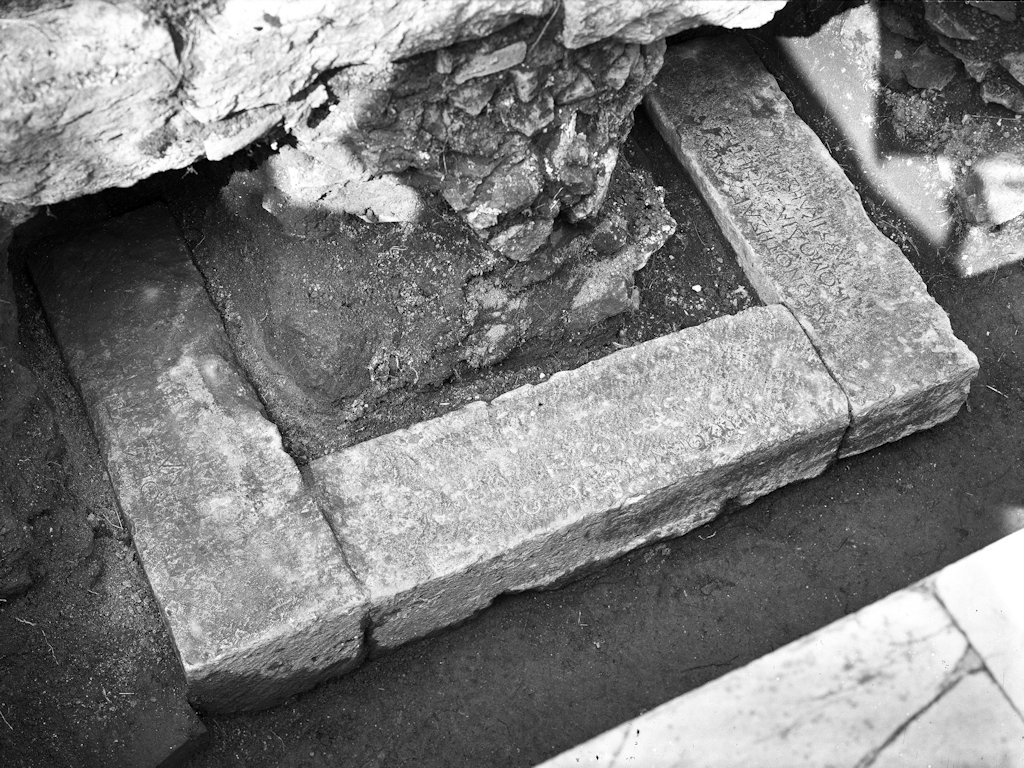The tiny Temple of the Round Altar is to the south-west of the Temple of Hercules, in the Sacred Area of the Republican Temples. To the first, republican phase belong remains of a podium of large tufa blocks (late second or early third century BC). At the end of the first century AD a brick cella was built, and a pronaos with two columns between piers. The temple was decorated with marble, the remains of which have been attached to the wall opposite the temple. A round marble altar from the Trajanic period gave the temple its name. It is now in the museum. On the altar are depictions of with two cupids, a rudder, a burning torch, a quiver with arrows, and a bow.
Plan of the temple. Pensabene 2007, fig. 8.When the temple was renovated in the Imperial period, three travertine bases were reused, carrying Greek inscriptions that once accompanied statues. Each inscription mentions the name of an artist and of the person that was represented: Charite, oracular priestess from Delphi, by Phradmon of Argos; Plato, author of comedies, by Lysicles; Antisthenes, philosopher, by Phyromachos. The statues must have been bronze originals, made in the fourth century BC. The statues of Antisthenes and Phyromachos must have been standing in Athens, the one by Phradmon in Delphi. They were taken to Rome in the first half of the first century BC, and the inscriptions were made only then (this can be deduced from the style of writing). It has been suggested that they were donated to the city by a victorious general, after arriving in the harbour. Of course this has led to speculation about the identity of the general and the relation with the oracular aspects of the cult of Hercules in the adjacent temple. Filippo Coarelli has argued that it can only be one person: the general and statesman Sulla.



